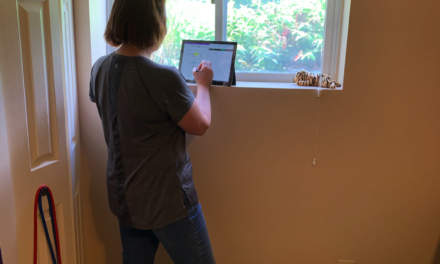- can you play a passage accurately by itself?
- can you play the passage in the larger context of the piece?
- can you play the passage to tempo?
- can you play the passage with the right expression?
Think about these goals in your own subject area and see if you can find a similar set of goals. For example, here are some potential goals for solving a math problem:
- can you find the correct solution?
- can you solve the problem in an elegant way?
- can you prove your solution is correct?
- can someone else understand your solution?
The first research paper I looked at was When Repetition Isn’t the Best Practice Strategy (2001), by Laura A. Stambaugh. A short summary is available here, though the original paper is a bit harder to get ahold of. I’ll elaborate a bit on the summary with the relevant points to our study of learning design.
Students were asked to practice three passages (denoted below in three colors) in either blocked- or random-formatpractice sessions. The three practice sessions were covered on three different days (denoted 1, 2, and 3 in the diagram below). The performance during the last three trials of each practice session were used as the baseline measure of comparison for the retention measures.

In this experiment, practicing “randomly” meant practicing the same three passages in either At the end of the three sessions, there were no performance differences between the two groups. However, when tested for retention, the blocked-practice students’ performance began to slow to the level of early practice in the trials. While the accuracy of the two groups of students was still the same, the random-practice students could now play the passages faster than the blocked-practice students. Stambaugh also tested transferability of skills, but did not find any statistically significant differences from this experiment. One other variable that Stambaugh thought to test was attitude towards practice depending on the research treatment (maybe students will really dislike random practice or blocked practice?). Here too, there were no statistically significant differences in attitude towards practice between the two student groups.
One of the reasons I find this article interesting is that it discusses the idea of contextual interference, the amount of cognitive disruption the learner experiences during practice with multiple tasks. When the learner has to redirect attention as the tasks change, this results in a high degree of contextual interference. When the tasks don’t change much (blocked practice), the brain can go into a sort of “autopilot” and stop paying attention. At this point, there may not be much point to practicing more on that day. Practicing the same things on a different day would have positive effect (that’s spaced repetition).




